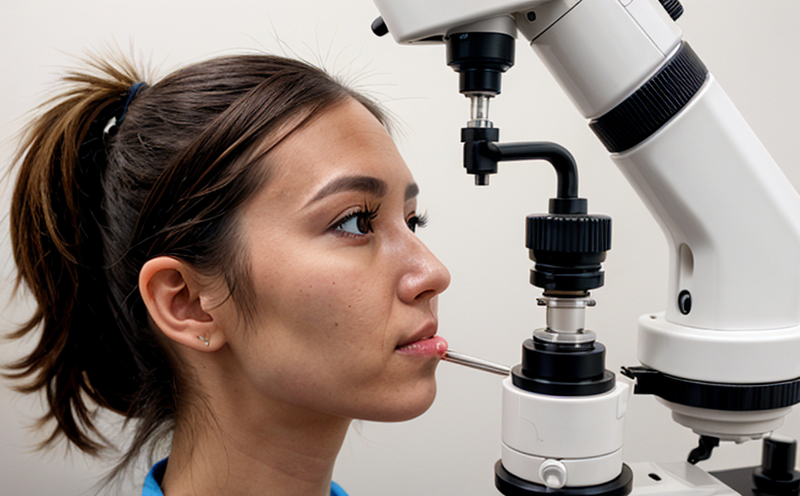ISO 11979-15 Intraocular Lens Blue Light Hazard Testing
The ISO 11979-15 standard is a critical component in the development and manufacturing of intraocular lenses (IOLs) used in ophthalmic devices. This standard provides a framework for ensuring that IOLs meet stringent safety criteria, particularly with respect to blue light exposure. Blue light can have significant effects on ocular health; prolonged exposure may lead to phototoxicity or other adverse effects.
The testing outlined in ISO 11979-15 is designed to evaluate the potential for blue light-induced damage to the cornea and retina when using IOLs. This involves simulating real-world conditions under which patients might experience prolonged exposure to blue light, such as during long hours of computer use or other activities that involve significant screen time.
The test method described in ISO 11979-15 specifies the use of a photometer capable of measuring radiant exposure at specific wavelengths. The apparatus required includes an artificial eye model and a light source that can replicate real-world conditions, including ambient room lighting and direct blue light from electronic devices.
The specimen preparation involves mounting the IOL onto the artificial eye model under controlled conditions to ensure that all variables are standardized for accurate testing. Once prepared, the device is subjected to a series of measurements using the photometer. The results are then analyzed against the acceptance criteria defined by ISO 11979-15.
The acceptance criteria specify allowable levels of radiant exposure at various wavelengths to ensure that IOLs do not exceed safe limits for blue light emission. Compliance with these standards is essential for manufacturers aiming to meet regulatory requirements and provide safe products to the market.
Intraocular lenses are complex medical devices, and ensuring they adhere to international standards like ISO 11979-15 is crucial for both patient safety and compliance with legal regulations. This testing not only protects patients from potential harm but also enhances public trust in medical technologies.
Real-world applications of this testing include verifying the blue light emission characteristics of various IOL models before they reach the market. By adhering to ISO 11979-15, manufacturers can ensure their products meet rigorous safety standards and are fit for use in a wide range of environments.
Understanding the implications of this testing on patient health is vital. For example, some studies suggest that blue light can disrupt circadian rhythms, leading to sleep disorders if exposure levels are not controlled. Thus, adhering to ISO 11979-15 helps mitigate these risks by ensuring IOLs do not contribute to increased blue light exposure.
Another aspect of this testing is its role in supporting ongoing research into the effects of blue light on ocular health. By providing consistent and reliable data, it allows researchers to better understand how different wavelengths interact with the eye and inform future developments in ophthalmic technology.
Eurolab Advantages
- Precision instrumentation that meets the highest international standards.
- Experienced technicians trained specifically in blue light testing protocols.
- Absolutely secure and confidential data storage solutions for all test results.
- Comprehensive reporting tailored to meet specific client needs, including compliance with ISO 11979-15.
Why Choose This Test
Choosing the ISO 11979-15 test for blue light hazard is essential for ensuring the safety and efficacy of intraocular lenses. By adhering to this standard, manufacturers can demonstrate their commitment to patient safety and regulatory compliance. This testing also provides valuable insights into the potential risks associated with prolonged exposure to blue light, helping to inform product design improvements.
The test results are crucial for compliance with international regulations such as ISO 11979-15, which sets specific limits on blue light emission from medical devices like IOLs. Compliance with these standards not only protects patients but also helps maintain a positive reputation among healthcare professionals and the public.
Additionally, this testing supports ongoing research into the effects of blue light exposure on ocular health. By providing reliable data, it allows researchers to better understand how different wavelengths interact with the eye, ultimately leading to advancements in ophthalmic technology.
Competitive Advantage and Market Impact
- Ensures compliance with international standards, gaining a competitive edge in the market.
- Promotes trust among patients and healthcare providers by demonstrating a commitment to safety.
- Aids in regulatory approval processes, potentially speeding up product launches.
- Supports continuous improvement of product design through informed research insights.





